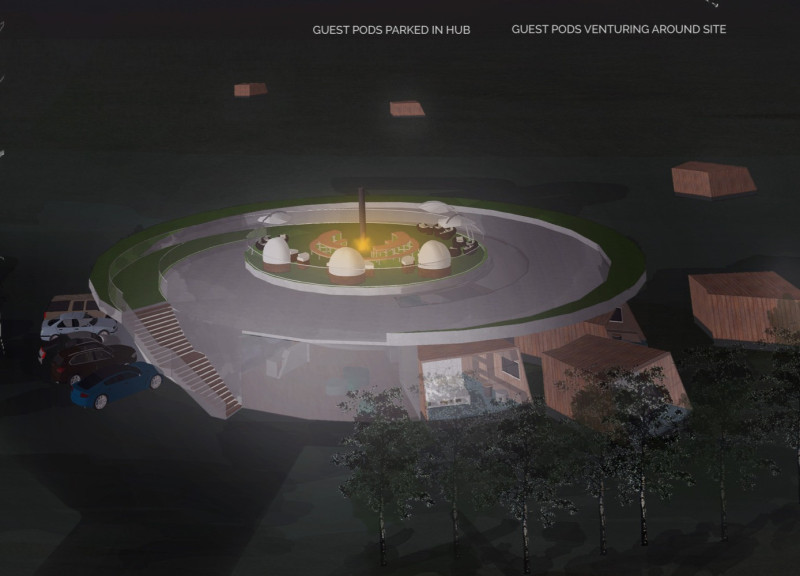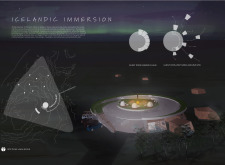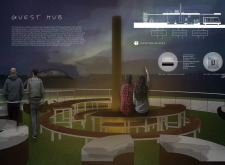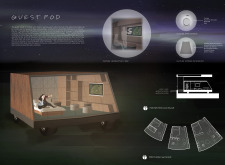5 key facts about this project
### Project Overview
Located in Iceland, the Icelandic Immersion Hotel aims to redefine the concept of hospitality by creating a holistic experience deeply connected to the surrounding landscape. The architectural intent is to harmonize built environments with natural features, allowing guests to engage with both the physical and cultural essence of Iceland. This design centers on fostering an immersive atmosphere that reflects the country's unique geology and climate, encouraging a symbiotic relationship between guests and their environment.
### Spatial Organization
The spatial layout includes a central hub encircled by individual guest pods, facilitating both community engagement and private retreat. The central hub serves as the primary gathering space, featuring versatile dining and relaxation areas beneath a green roof that integrates the structure with the surrounding landscape. This first-floor space promotes interaction through an open design and includes a community fireplace, while the second floor offers a rooftop lounge with sweeping vistas of the Icelandic scenery.
Individual guest pods, designed as mobile units, extend from the hub, empowering guests to choose between communal activities and solitary exploration. Each pod is equipped with interactive technology for navigation and features sustainable systems for waste management, water recycling, and geothermal energy usage, minimizing environmental impact while enhancing guest comfort.
### Material Selection
The project emphasizes sustainability through the careful selection of materials. Wooden elements provide warmth and a connection to nature, while energy-efficient ETFE glass is incorporated to maximize natural light and exterior views. Durable aluminum contributes to modern aesthetics and low maintenance requirements. The green roof not only enhances insulation but also provides ecological benefits, promoting biodiversity. Insulation materials are chosen for thermal resistance, ensuring year-round comfort while minimizing reliance on artificial heating and cooling systems.





















































